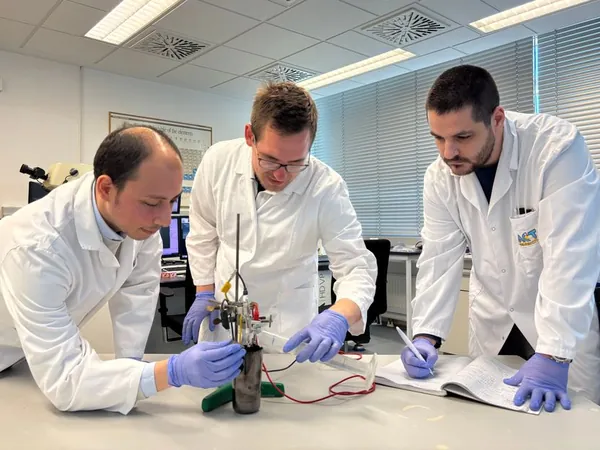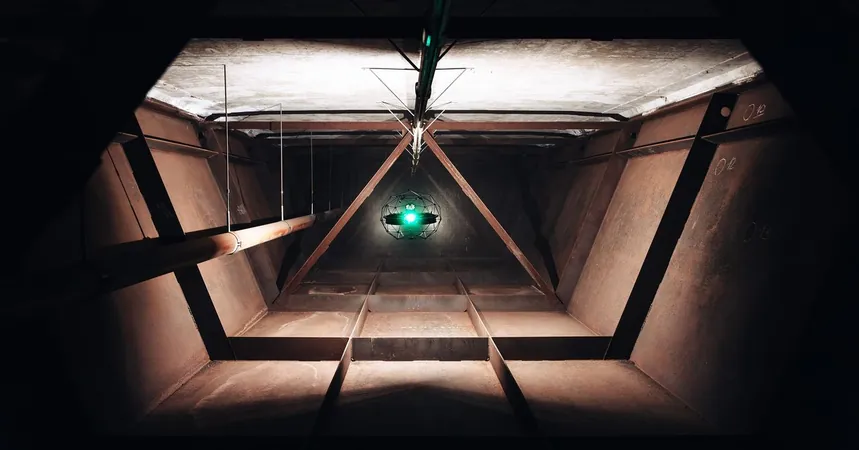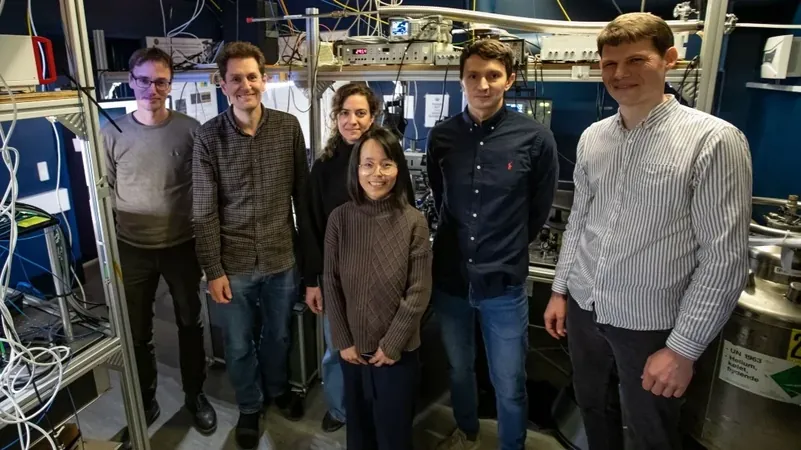
Revolutionary New Method Makes 'Miracle Material' MXene Safe and Easily Accessible
2025-04-16
Author: Liam
A Breakthrough in 2D Materials Science
In the ever-evolving world of materials science, a groundbreaking development has emerged. Scientists are diving deep into the realm of 2D materials, a class that includes single-layer structures showcasing astonishingly unique properties compared to their bulkier counterparts. Following the trailblazing success of graphene, researchers are now focusing on MXenes—composed primarily of titanium and carbon—through initiatives led by TU Wien in collaboration with industry leaders CEST and AC2T.
MXenes: The 'Miracle Material' of the Future
MXenes are gaining fame for their extraordinary capabilities. From providing unparalleled electromagnetic shielding to revolutionizing energy storage and crafting next-gen sensors, these materials seem to possess almost magical attributes. One notable application is their role as remarkable solid lubricants, showing promise even in extreme environments, such as those faced in space technology.
Ditching the Toxicity: A Game-Changing Synthesis Method
Historically, the production of MXenes has come with a hefty price: the use of hazardous hydrofluoric acid. This toxic substance posed significant risks not only to human safety but also to the environment, creating barriers for widespread industrial adoption. However, researchers at TU Wien have unveiled a revolutionary new method that eliminates the need for such dangerous chemicals. Instead of acid, they now employ electricity to synthesize MXenes, a breakthrough detailed in the journal "Small."
From MAX Phases to Electrochemical MXenes
"To create MXenes, we begin with MAX phases—interlayer materials that may comprise aluminum, titanium, and carbon," explains Pierluigi Bilotto, a member of the TU Wien research team. Previously, these layers were etched using hydrofluoric acid to produce MXenes that glide effortlessly against each other, making them ideal lubricants. Unfortunately, the toxic nature of hydrofluoric acid and the convoluted protocols surrounding its use stifled industrial progress.
Innovative Electrochemistry Techniques
That’s when Bilotto, alongside a team of experts including Prof. Carsten Gachot and Prof. Markus Valtiner from TU Wien, pivoted to electrochemistry. "Electrochemistry provides a safer alternative by applying electrical voltage to the MAX phases, triggering reactions that selectively remove aluminum while preserving the integrity of the MXenes," Bilotto explains. By skillfully administering electrical pulses, the researchers could maintain productive reactions that led to the efficient creation of high-quality electrochemical MXenes (EC-MXenes).
Quality You Can Rely On
Their innovative method was validated using advanced analytical techniques like Atomic Force Microscopy and Scanning Electron Microscopy, revealing that the properties of the newly synthesized EC-MXenes match or even surpass those produced via toxic methods. Bilotto’s vision? To simplify MXene synthesis to the point that it could be accomplished in a household kitchen. "We are extremely close to realizing that goal," he concludes.
The Future is Bright for MXenes
As this research continues to advance, MXenes could soon find their way into a wide array of industries, paving the path for cleaner, safer applications in technology, energy storage, and beyond. The potential for this 'miracle material' is just beginning to unfold, setting the stage for an exciting new era in materials science.









 Brasil (PT)
Brasil (PT)
 Canada (EN)
Canada (EN)
 Chile (ES)
Chile (ES)
 Česko (CS)
Česko (CS)
 대한민국 (KO)
대한민국 (KO)
 España (ES)
España (ES)
 France (FR)
France (FR)
 Hong Kong (EN)
Hong Kong (EN)
 Italia (IT)
Italia (IT)
 日本 (JA)
日本 (JA)
 Magyarország (HU)
Magyarország (HU)
 Norge (NO)
Norge (NO)
 Polska (PL)
Polska (PL)
 Schweiz (DE)
Schweiz (DE)
 Singapore (EN)
Singapore (EN)
 Sverige (SV)
Sverige (SV)
 Suomi (FI)
Suomi (FI)
 Türkiye (TR)
Türkiye (TR)
 الإمارات العربية المتحدة (AR)
الإمارات العربية المتحدة (AR)